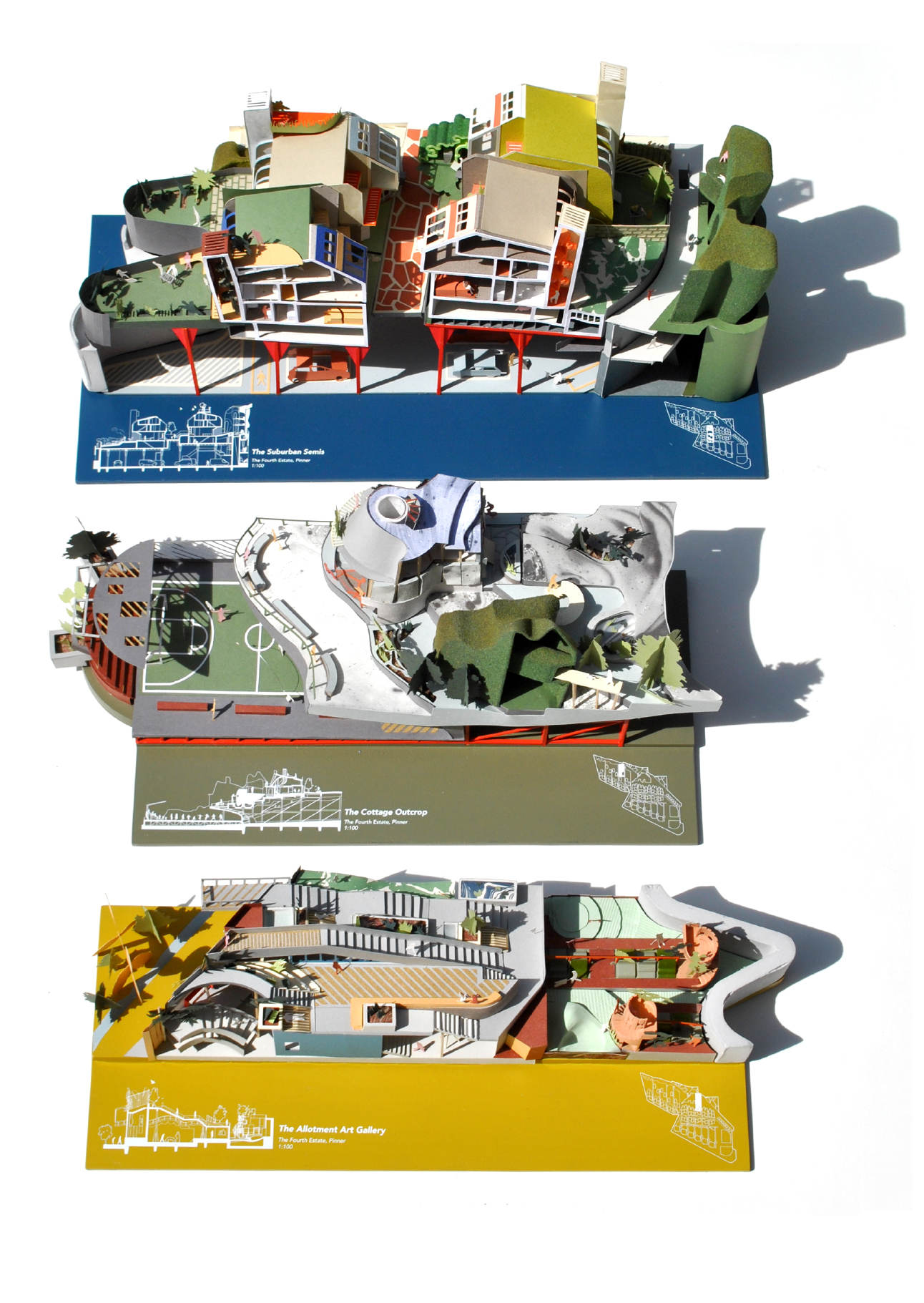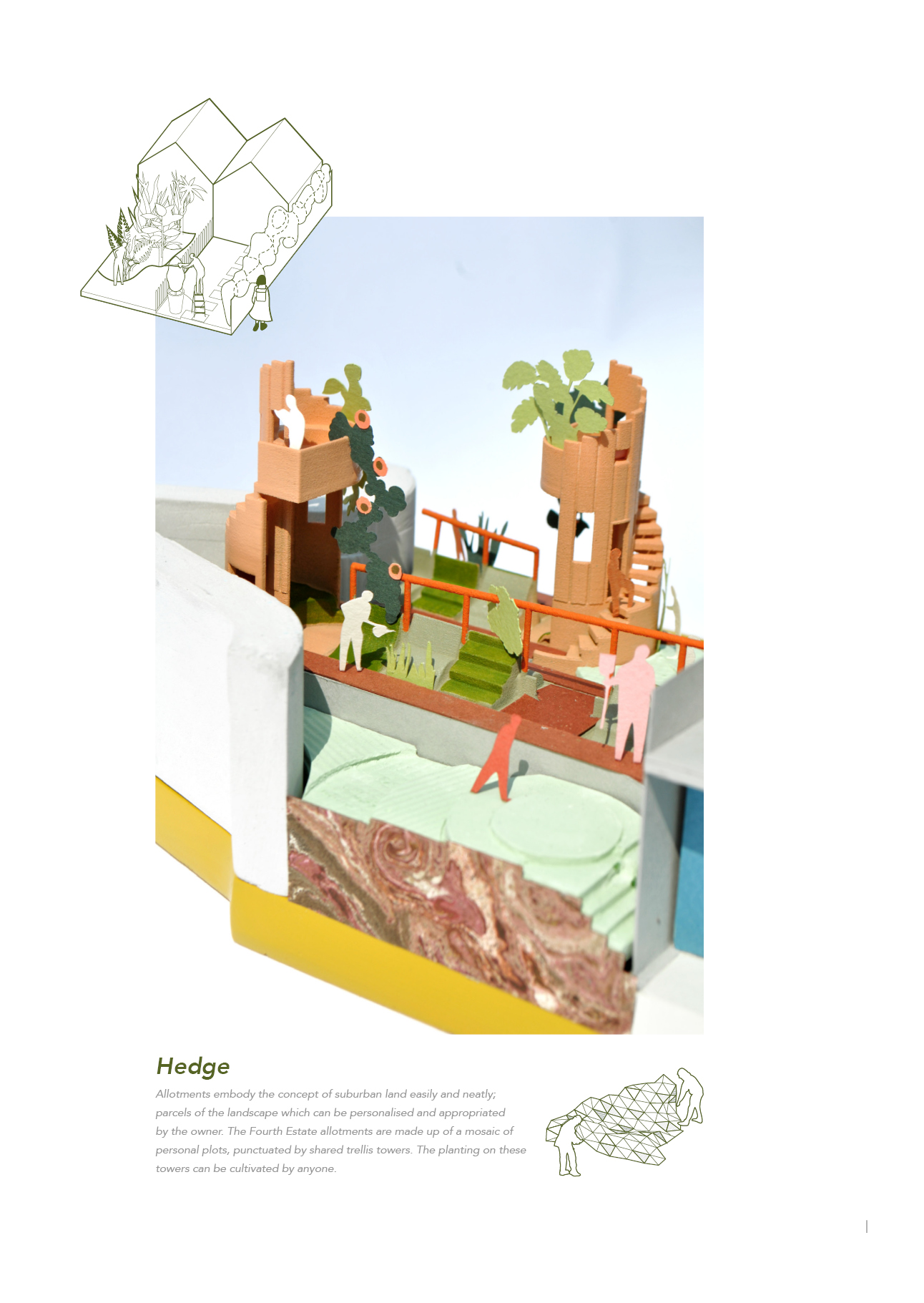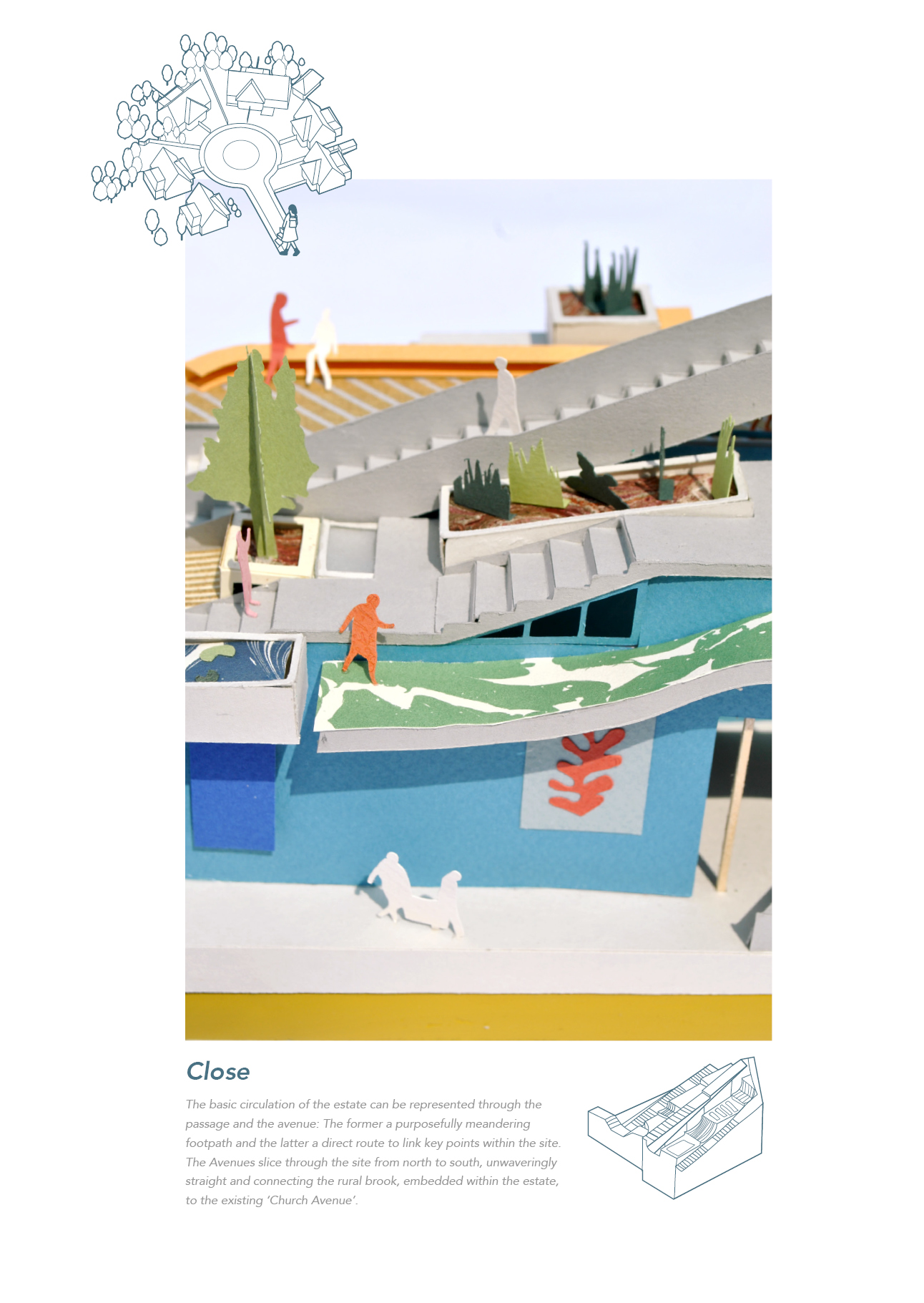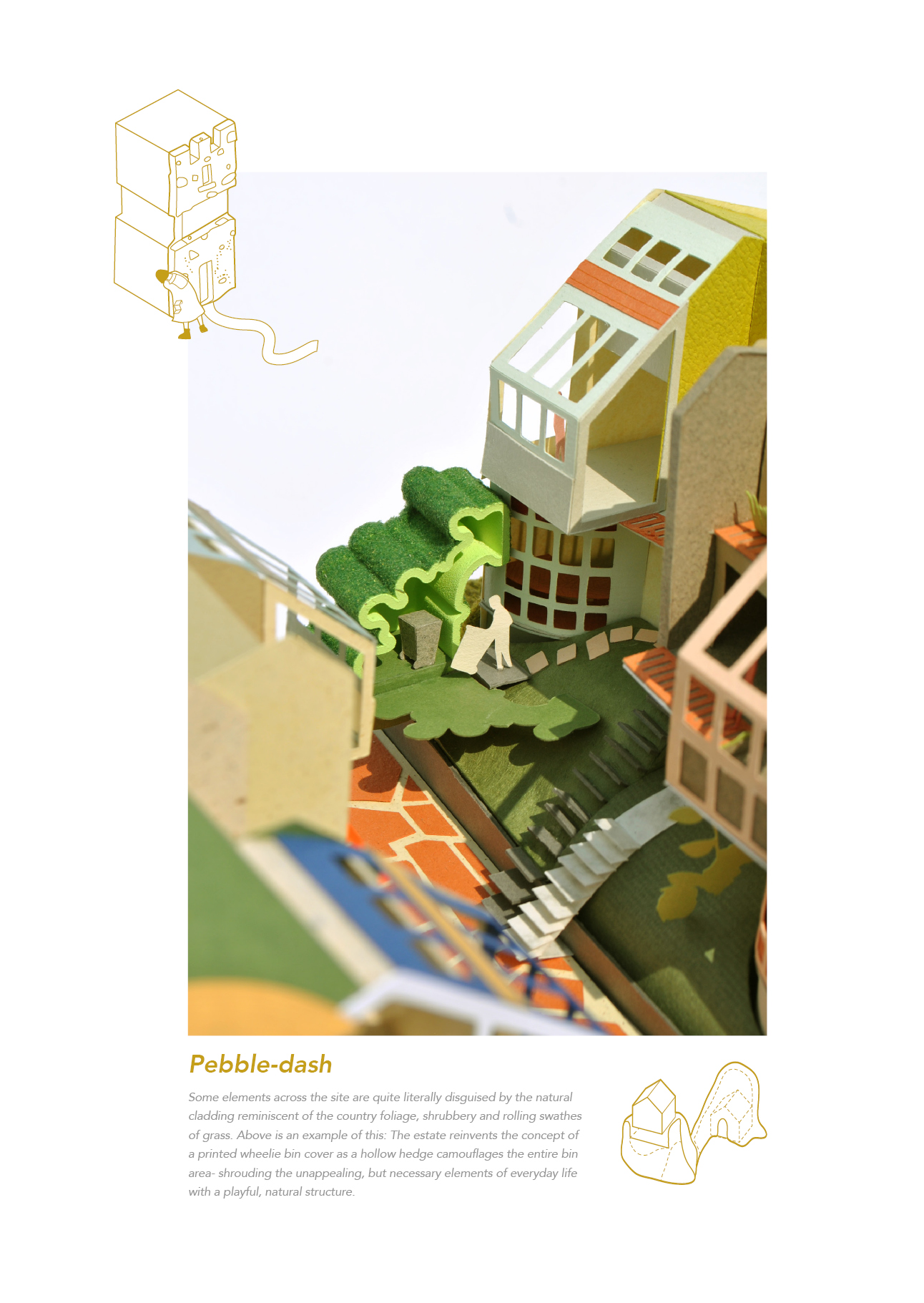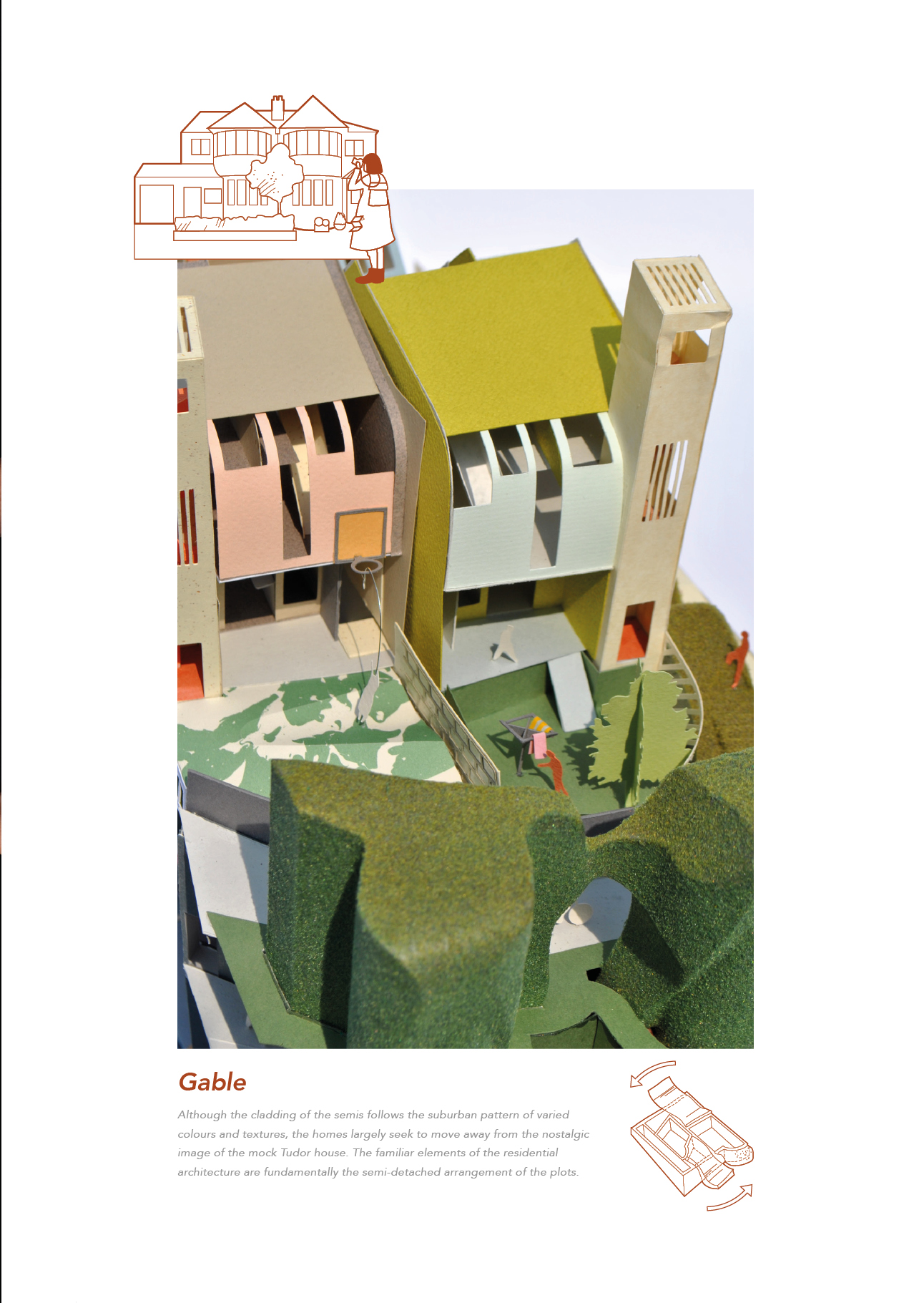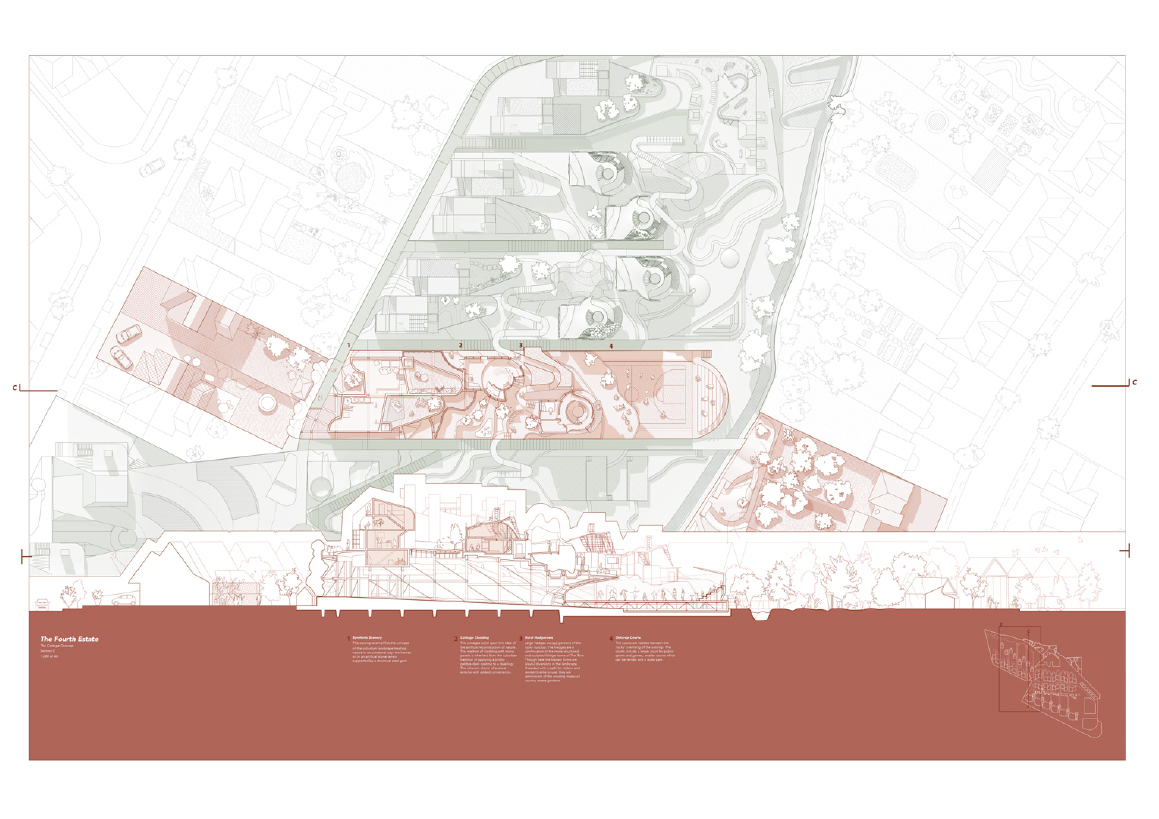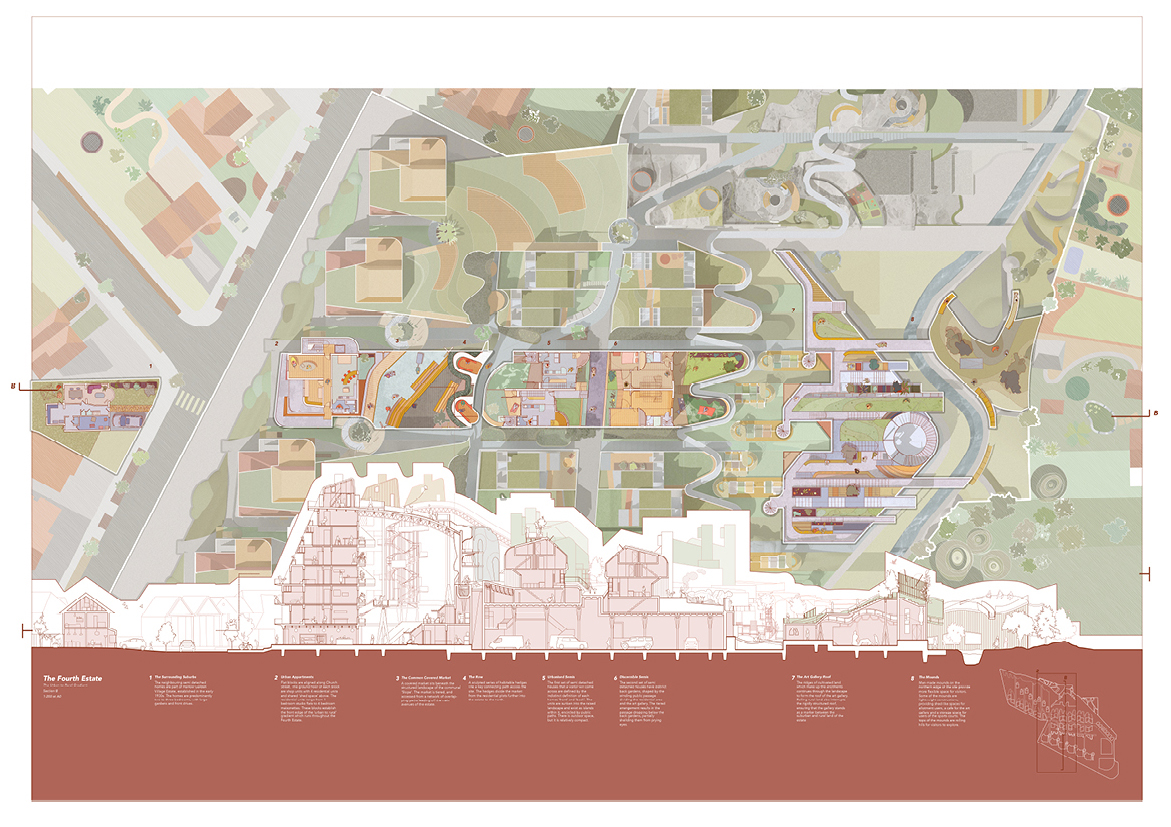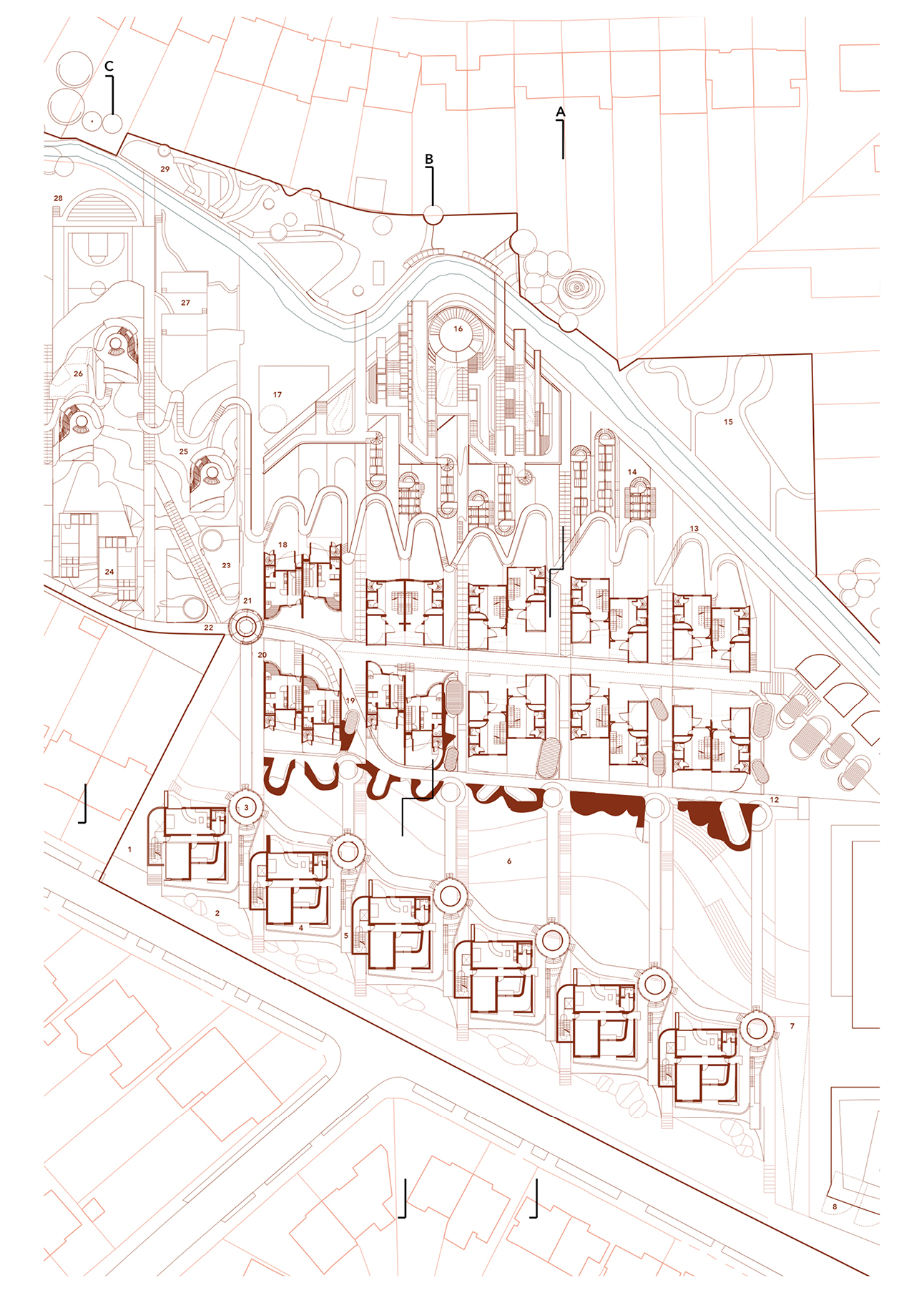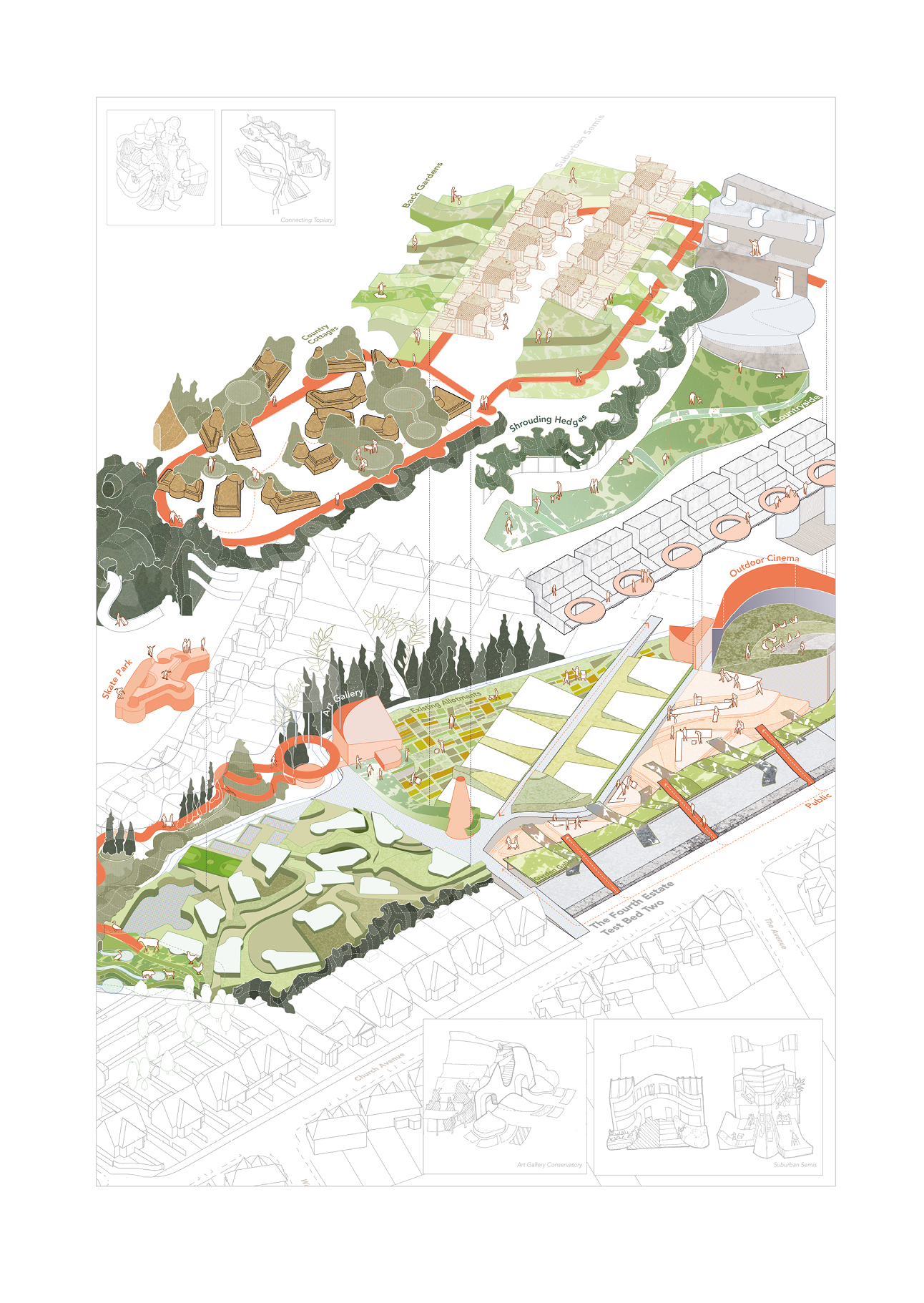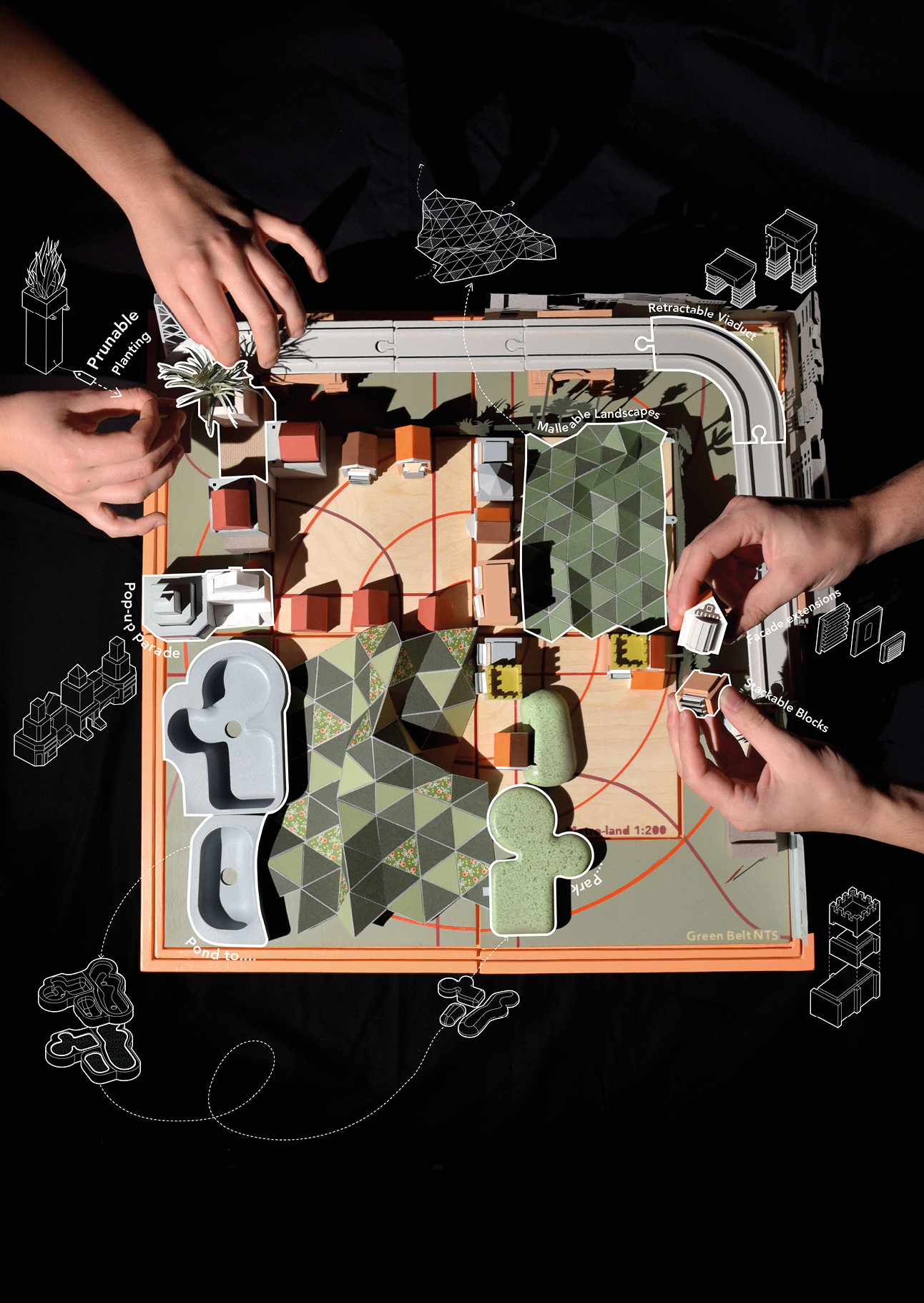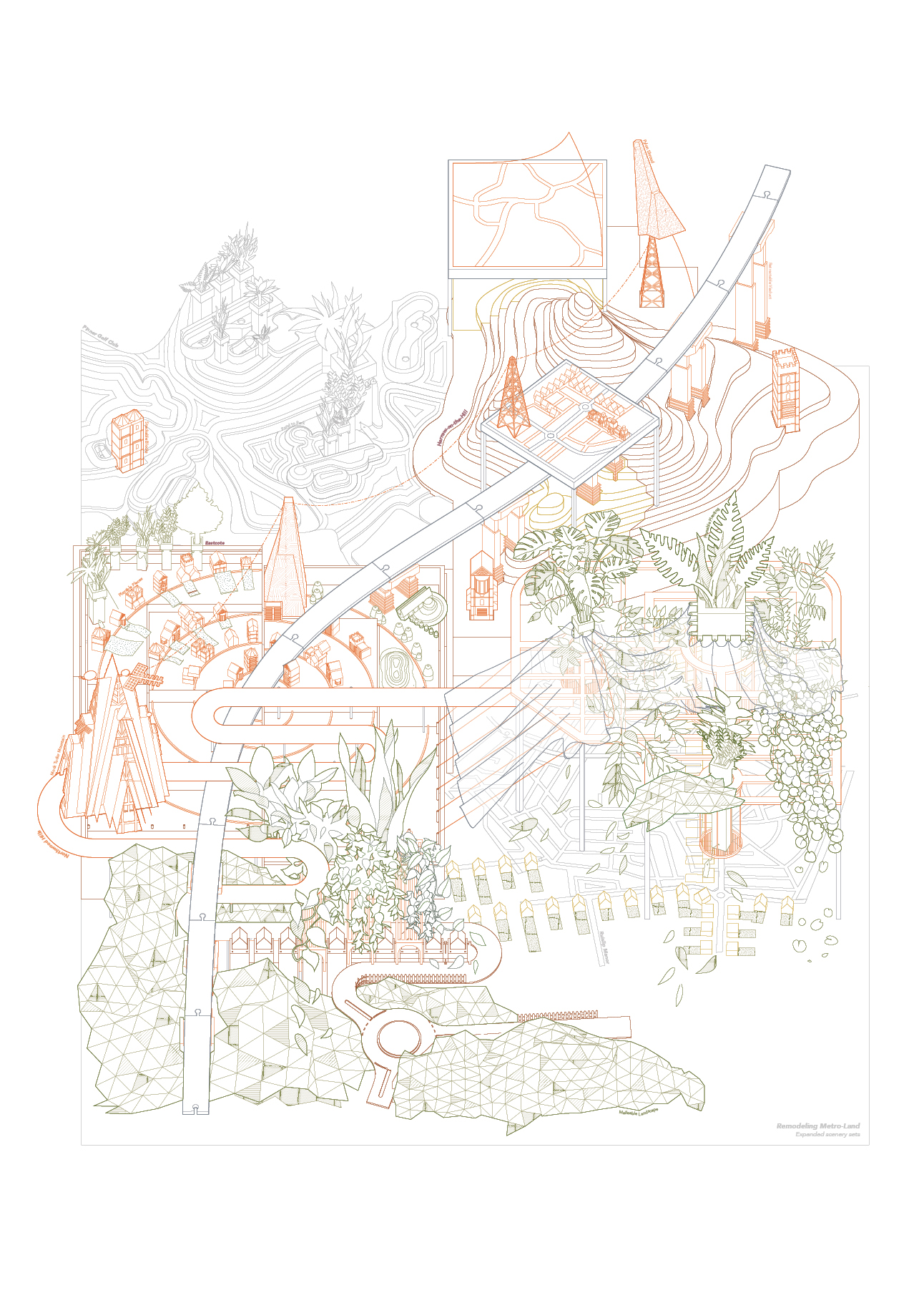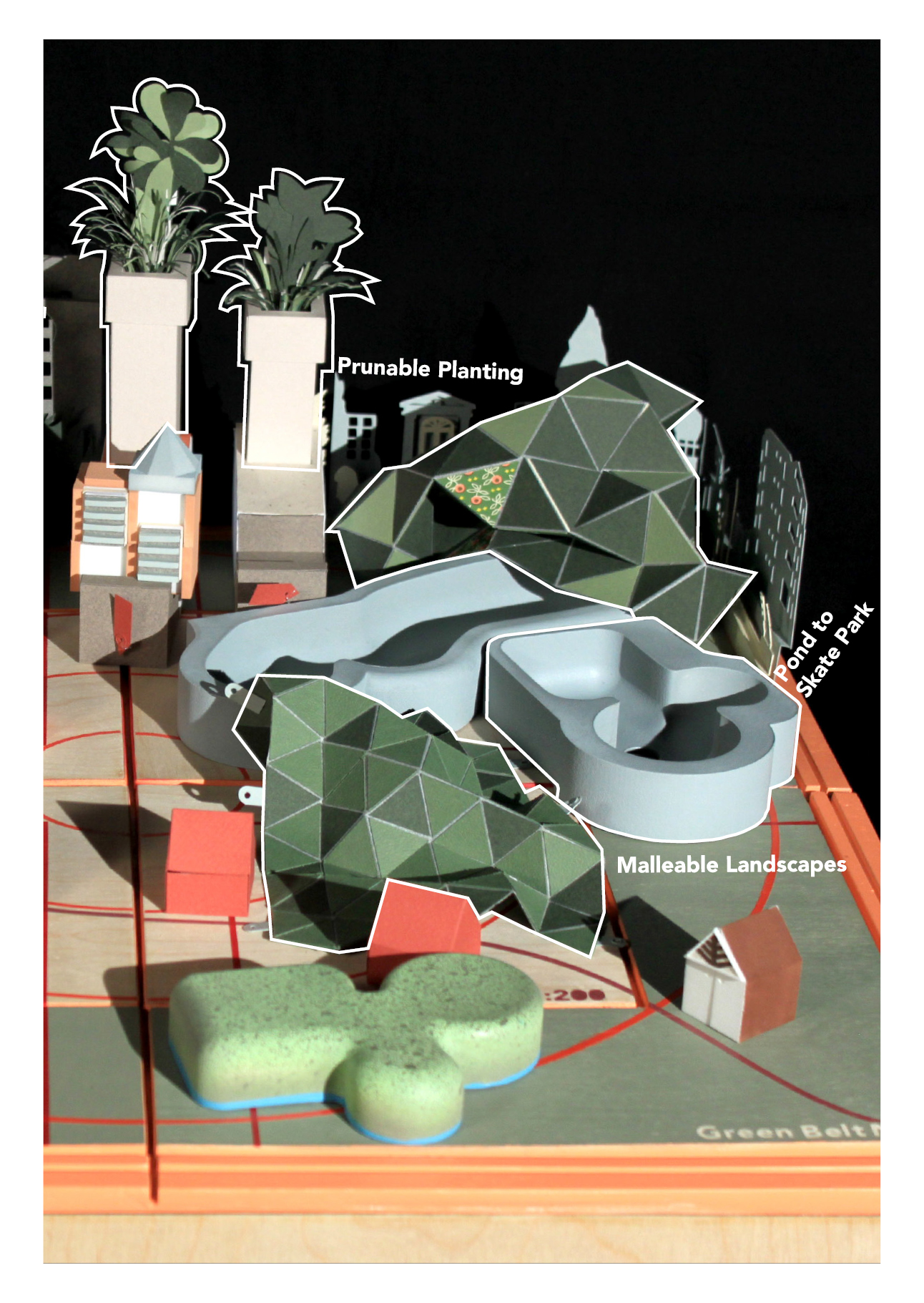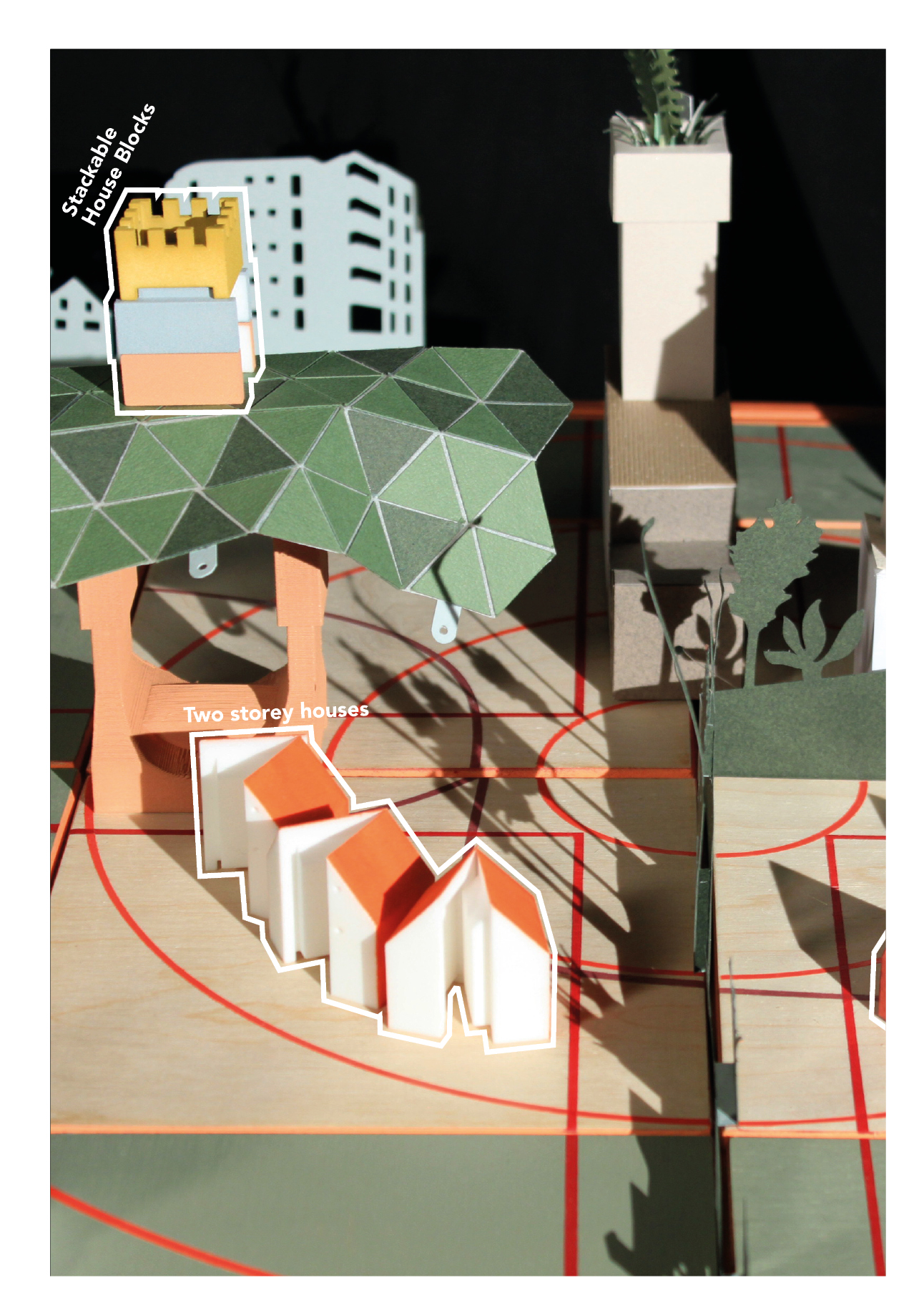Ellie Sampson Y5
The Fourth Estate. The popularity of the suburbs effectively showcases the difference between what architecture students are taught to admire and what most people actually prefer. Assumptions are often made about suburbia, mainly by those who have never resided there. Ultimately, the architecture is snubbed for its unchallenging familiarity and its dependence on specific nostalgic imagery. Yet this homely vision of a mock-Tudor gable and a steeply pitched roof is arguably the image that is most associated with British domestic tradition — today about 1/3 of the British population happily live in a suburban semi-detached home.
The writer J B Priestley’s in his 1934 work English Journey marked out the key states of Britain‘s existence: Firstly ‘an old England of ministers and manor houses’, then ‘nineteenth century industrial England’ and finally, ‘the third England...which is essentially suburban’. The Fourth Estate is a testbed for a new template of British housing, which draws from the architectural traditions that preceded it: The cultivation and often artificial construction of the countryside, the convenience and contradictions of the suburbs and the variety of the multifaceted urban environment.
The scheme is sited between Pinner and Rayners Lane in North West London, an area that now encapsulates a new urban/suburban condition. Whilst some neighbourhoods are indistinguishable from the densely packed streets of the city centre, other portions of land seem inflexible - resolutely preserving the strings of spacious back gardens, drives and side returns.
The Fourth Estate intervention demonstrates how current contradictions, subtly woven into the fabric of Metro-Land, can be exaggerated. The Estate’s existence as an ‘in-between state’ can be manipulated to produce more exciting and unexpected spaces. The urban to rural gradient of the masterplan’s arrangement facilitates are three distinct housing arrangements, as well as a high-street, an art gallery, sports courts, cafes, corner shops and a small petting zoo. These components are arranged in a multi-layered landscape of tightly packed structures, sprawling landscapes, meandering footpaths and unexpected diversions across a tiered terrain.

